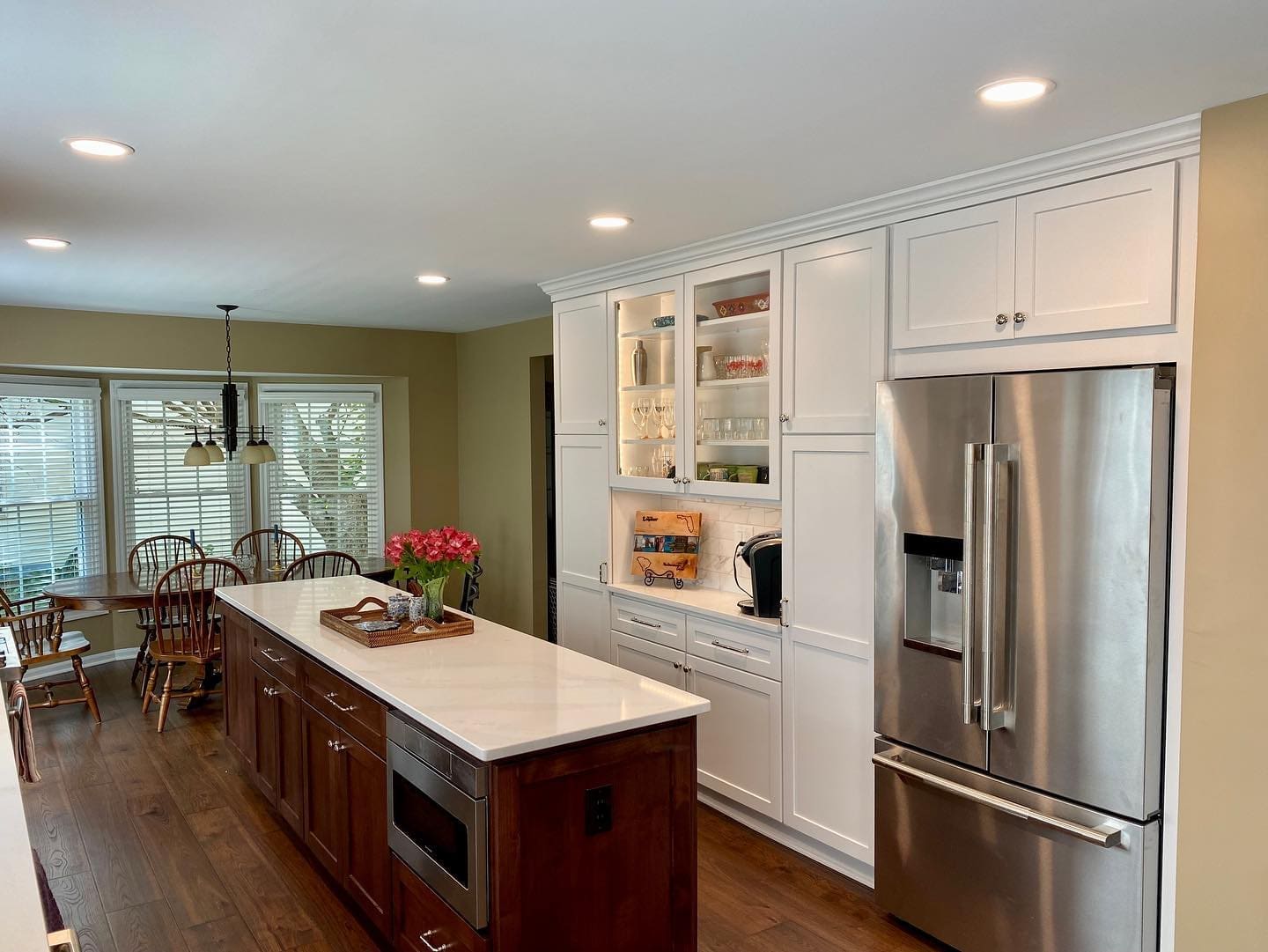 As the search continues for the perfect countertop material for a new kitchen, taking a look at tile as an option will entice those who are lured by flexibility of design that tile has to offer their new space. While tile may often be overlooked as a suitable and premium countertop surface for a stylish and active kitchen, the opposite is more apt to be true. Tile can achieve an aesthetic and textural appeal that no other countertop surface can match; and when you pair this trait with durability and cost-effectiveness, tile may easily be the answer for your new countertop surface.
As the search continues for the perfect countertop material for a new kitchen, taking a look at tile as an option will entice those who are lured by flexibility of design that tile has to offer their new space. While tile may often be overlooked as a suitable and premium countertop surface for a stylish and active kitchen, the opposite is more apt to be true. Tile can achieve an aesthetic and textural appeal that no other countertop surface can match; and when you pair this trait with durability and cost-effectiveness, tile may easily be the answer for your new countertop surface.
Tile Composition, Shape and Size Options
One of the more endearing characteristics of tile is that it is available in so many different shapes, sizes and, in some cases, formats. Squares, rectangles, triangle, hexagon, octagon, and ‘diamond’ shapes are the most common geometrical forms of tile; and these shapes are often used interchangeably in order to render a visual that is truly customized. Tile also lends itself to custom installations when the scale or dimensions of any given tile are interchanged with another, or several, different sized tiles. For example, a background field of 12”x12” tiles may easily be broken-up or accented with 9-4”x4” tiles or 12-3”x3” tiles as these smaller tiles simply occupy the same area that the 12”x12” tile would. Integrating triangle and ‘diamond’ shapes may require some minor cutting when used with square tiles, but the effect in style is worth the little extra effort. You will also find, in your tile perusing, a bountiful selection of small-scale tiles (or glass, stone) that are considered to be formatted mosaics. These small, and often irregular, tiles are mounted upon a sheet or synthetic ‘screen’; and they may be installed in the full field as a random and irregular pattern or the sheets can be cut, rendering smaller representations of the format for accent purposes.
The tiles that you’ll be considering will be of four basic compositions: Ceramic (Clay), Porcelain, Glass and Natural Stone. Ceramic tile, typically, is a compressed clay composition with topical coloration and a clear glazing baked on which provides the tile with resiliency and shine. Porcelain tile is a closer relative to glass than it is to Ceramic tile. Porcelain is, for the most part, fine silica sand that is actually melted to form the tile; and this is accomplished at a very high, extreme temperature! These tiles may be produced as glazed or unglazed, with the color of the tile represented throughout the body of the tile (thru-body) or topically colored as its ceramic cousin is. Glass tile may be tinted or treated to create a different feel or have air bubbles suspended within it for aesthetic reasons. Natural stone tiles like granite, marble, limestone and travertine, are thinner tile versions of countertop slab material; and, of course, they come to you from Mother Earth.
Styling, Finishing and the ‘Achilles Heel’ of Tile Countertops
Inasmuch as you’re dealing with modular pieces of material (as opposed to large sheets or slabs) there is, literally, no styling limit that can be reached with tile countertops. Even a nearly monolithic visual can be achieved by utilizing a large scale stone or porcelain tile and by eliminating the grout joint. Accent colors and textural themes can easily be addressed by the inclusion of a handful of specialty tiles that will accommodate this need or desire. There are few rules in countertop tile installations, so treat your countertop and backsplash as a raw canvass to exercise your artistic ambition.
In tile countertop installations, one element that should be considered in advance is how the edge of the counter is to be addressed. Some tile styles will offer specific trim pieces that work nicely in finishing-off the tile counter. Stone tiles and thru-body porcelain tiles may be sanded smooth or have decorative edges cut into them as a means of creating a finished edge. There are also manufacturers of solid metal tile trim that can be used as a finished edging, coordinating with other brass, nickel, stainless or bronze finishes in the kitchen. Another acceptable option is to trim the counter edges in the same color or wood species that the cabinets are made of, tying the ceramic tile into a more gentle transition of other dominant kitchen features.
While all the tiles discussed here are extremely resistant to impact, heat and staining agents, the grout that is required in most tile installations is not. The single greatest weakness in a tile countertop is not about the tile at all, it’s the grout (‘Achilles Heel’). Grout is typically a cement-based product; and being of this composition, it is very susceptible to contamination and discoloration, because it is porous by nature. The major maintenance requirement of a tile countertop is to keep the grout clean and free of staining agents and reduce the porosity of the grout by sealing the grout a couple times a year with a quality grout sealer. Specialty grouts, like resin and acrylic epoxies, can offer some freedom in the need or frequency of sealing the grout–and are terrific for deterring bacterial growth–but the choices of colors in these products may be limiting for a truly artistic consumer.





